透明微晶玻璃的退火工艺制度毕业论文
2021-11-26 23:34:34
论文总字数:22345字
摘 要
透明微晶玻璃是一种新型的固体光学材料,与传统的固体光学材料相比具有不可比拟的优势。透明微晶玻璃是通过在基础玻璃内析出透明的微晶体形成的,具有极高强度、优异的光学性能和热学性能,因而具有良好的应用前景。透明微晶玻璃在其生产制备的过程中,会产生大量的内应力,内应力会引发微晶玻璃产生许多缺陷,从而影响其后期的加工性能。采取合适的退火能够有效消除透明微晶玻璃的内应力,提高其后期加工性能。同时合适的退火制度能够避免成品因为应力过大发生炸裂,提高成品率,从而减少能源的消耗,具有重要的节能降耗意义。
本文主要研究不同的退火时间和退火温度对其力学性能和残余应力的影响。本文通过查阅文献资料,设计了MgO-Al2O3-SiO2透明微晶玻璃从制备到退火、测试的工艺流程。总结了退火时间和退火温度对不透明微晶玻璃残余应力、结构和力学性能的影响。从而推测透明微晶玻璃的退火时间和退火温度对其残余应力、显微结构和力学性能的影响。
研究结果表明:退火能够有效消除微晶玻璃的内应力并均化内应力,同时退火能够消除微晶玻璃内的裂纹等缺陷。微晶玻璃的最佳退火温度应在基础玻璃转变温度Tg之上,而最佳退火时间应比普通微晶玻璃长。同时退火能有效改善微晶玻璃的结构,使晶体分布均匀,生长完整,晶相和微晶相的结合紧密程度也有所上升,从而导致微晶玻璃力学性能有所上升。
本文的特色:根据前人对MgO-Al2O3-SiO2透明微晶玻璃的研究和对微晶玻璃退火的研究。设计了MgO-Al2O3-SiO2透明微晶玻璃的退火制度研究方案。总结了前人对微晶玻璃退火的研究成果。
关键词:透明微晶玻璃;退火工艺;退火时间;退火温度;力学性能。
Abstract
Transparent glass-ceramic is a new type of solid optical material. Compared with traditional solid optical materials, it has incomparable advantages. It is formed by the formation of transparent micro crystals in the basic glass. Its high strength, excellent optical and thermal properties make it has a good application prospects. Transparent micro crystal glass will produce a lot of internal stress in its manufacturing process. Internal stress will cause many defects in micro crystal glass, which will affect its later processing performance.The proper annealing method can effectively eliminate the internal stress of transparent micro crystal glass and improve its later processing ability. At the same time, proper annealing system can avoid the cracking of finished products due to excessive stress, improve the yield of finished products, and thus reduce energy consumption, which has important significance of energy conservation and consumption reduction.
This paper mainly studies the effect of different annealing time and temperature on its mechanical properties and residual stress. In this paper, I designed the technological process from preparation to annealing to testing of MgO-Al2O3-SiO2 transparent micro crystal glass, through consulting the literature. I summarize the effect of annealing time and temperature on the residual stress, microstructure and mechanical properties of opaque glass ceramics. Through the previous tests, I further speculated that the annealing time and annealing temperature of transparent micro crystal glass had an impact on its residual stress, microstructure and mechanical properties.
The results show that: annealing can effectively eliminate and homogenize the internal stress of micro crystal glass. At the same time, annealing can eliminate the cracks and other defects in the micro crystal glass. The optimal annealing temperature of glass ceramics should be above Tg of basic glass transition temperature, and the optimal annealing time should be longer than that of ordinary glass ceramics. Annealing can effectively improve the structure of microcrystalline glass, make crystal distribution uniform, growth complete, make the combination of crystalline phase and microcrystalline phase increase, so that make the mechanical properties of microcrystalline glass increasing.
Features of this article: according to the previous research on MgO-Al2O3-SiO2 transparent glass ceramics and the annealing of glass ceramics, this paper designs the annealing system research scheme of MgO-Al2O3-SiO2 transparent glass ceramics, and summarizes the previous research results on the annealing of glass ceramics.
Keywords: transparent glass ceramics; annealing process; annealing time; annealing temperature; mechanical properties.
目录
摘要 I
Abstract II
目录 III
第1章 绪论 1
1.1引言 1
1.2透明微晶玻璃 1
1.2.1透明微晶玻璃分类 1
1. 2.2透明微晶玻璃的制备方法 2
1.2.3透明微晶玻璃的研究现状 3
1.3微晶玻璃的退火 3
1.3.1微晶玻璃残余应力 3
1.3.2退火工艺流程 5
1.3.3微晶玻璃退火研究现状 5
1.4研究目的 6
第2章 实验 7
2.1试验原材料和实验器材 7
2.2实验过程 8
2.2.1玻璃组分设计 8
2.2.2基础玻璃的制备 8
2.2.3透明微晶玻璃的制备 8
2.2.4透明微晶玻璃的退火 9
2.3测试和表征方法 9
2.3.1基础玻璃的差热分析 9
2.3.2残余应力的测试 9
2.3.3硬度的测试 9
2.3.4强度的测试 9
2.3.5显微结构测试 9
2.3.6晶相测定 9
第3章 退火时间和退火温度对透明微晶玻璃残余应力的影响 11
3.1退火对透明微晶玻璃残余应力的影响 11
3.2退火温度对透明微晶玻璃残余应力的影响 12
3.2.1透明微晶玻璃退火温度的确定方法 12
3.2.2不同退火温度对透明微晶玻璃残余应力的影响 12
3.3退火时间对透明微晶玻璃残余应力的影响 13
3.4小结 14
第4章 退火时间和退火温度对透明微晶玻璃力学性能的影响 15
4.1退火时间和退火温度对透明微晶玻璃微观结构的影响 15
4.2退火时间和退火温度对透明微晶玻璃力学性能的影响 18
4.3小结 19
第5章 结论 20
参考文献 21
致谢 22
附录1 23
第1章 绪论
1.1引言
在玻璃工艺中,退火主要是指玻璃中残余应力的减少或消除的过程。玻璃退火的目的是消除玻璃制品中的残余应力和光学不均匀性以及稳定玻璃内部的结构。玻璃在其生产制备的过程中会因为存在温度梯度和结构差异而产生内应力[1],存在于玻璃制品中的应力是极为有害的,内应力过大容易引发玻璃成品产生裂纹,严重时导致玻璃发生炸裂。而退火能够消除玻璃的内应力,并且最后再冷却到室温时也不会产生太大的有害应变。
透明微晶玻璃生产过程中,最重要的是在基础玻璃中控制析出透明的微小的晶体。微晶体的析出改变了基础玻璃的结构,赋予了透明微晶玻璃优异的性能,同时微晶体的析出也让透明微晶玻璃在生产过程中产生了更多的内应力。内应力过大容易导致微晶玻璃发生炸裂或引发裂纹等缺陷,降低透明微晶玻璃的强度和硬度等力学性能,影响透明微晶玻璃的后期加工性能。因此微晶玻璃的退火工艺显得十分重要。而微晶玻璃的退火工艺制度决定了微晶玻璃的退火效率,其中最重要的是确定退火温度和退火时间。为此,本文拟探讨退火温度和退火时间对透明微晶玻璃残余应力和力学性能的影响。
1.2透明微晶玻璃
请支付后下载全文,论文总字数:22345字
相关图片展示:
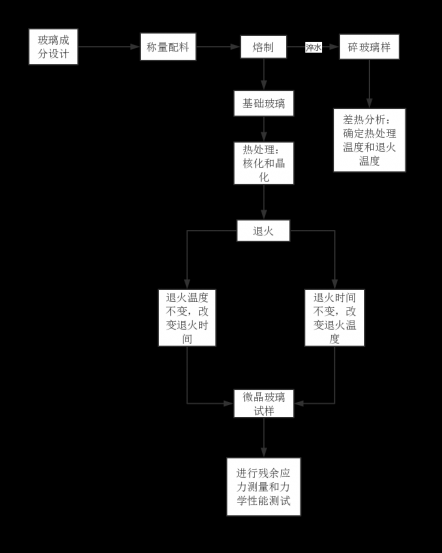
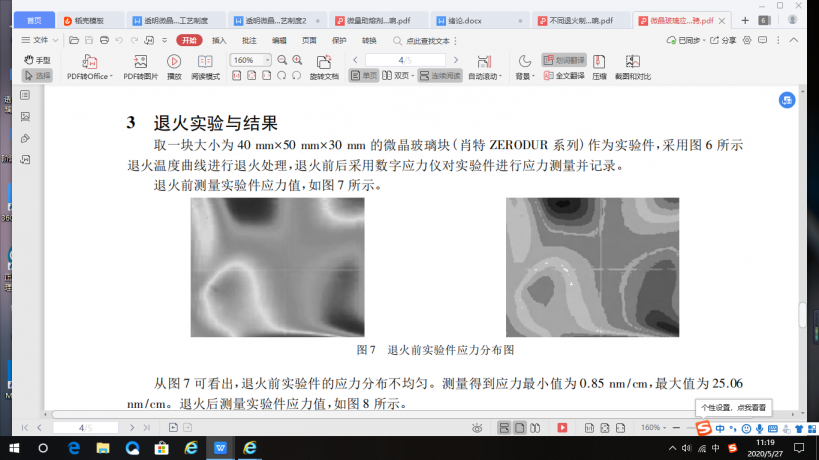
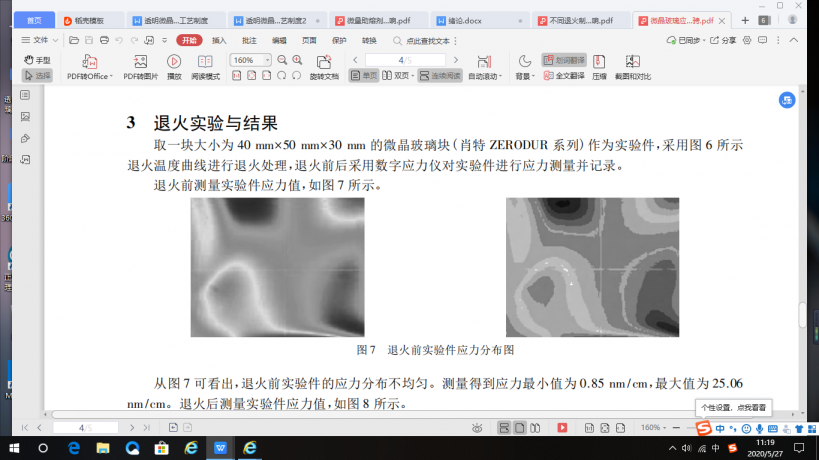
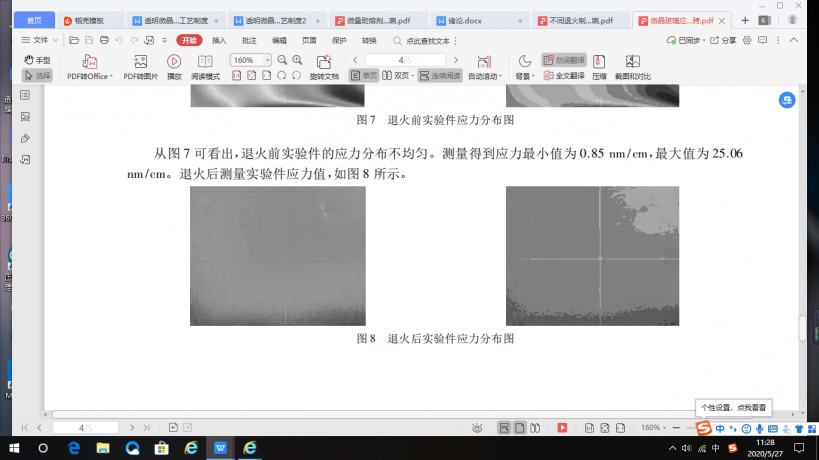
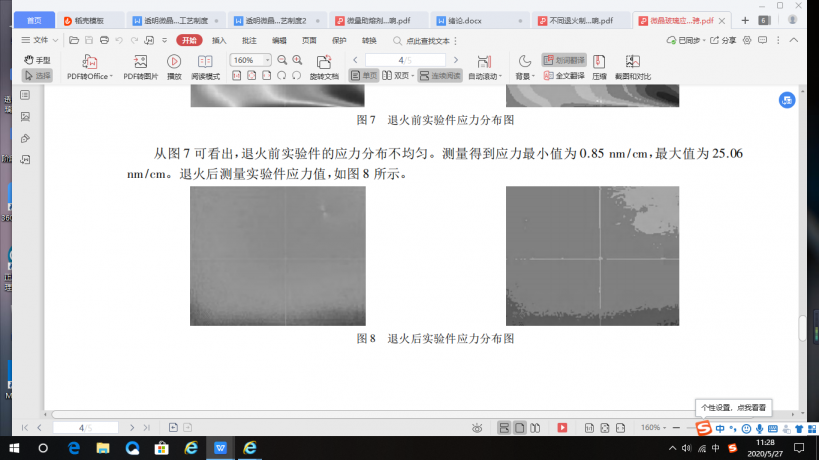
您可能感兴趣的文章
- 蒸养纤维掺杂高铁低钙水泥混凝土的抗海水冲磨性能研究文献综述
- TIPA对水泥-锂渣体系力学性能和水化性能的影响外文翻译资料
- TEA对锂渣-水泥复合粘结剂流变性能及水化性能的影响外文翻译资料
- 硫酸铝无碱液体促进剂的效果研究烷醇胺对硅酸盐水泥水化过程的影响外文翻译资料
- 新型C-A-S-H/PCE纳米复合材料:设计表征和对水泥水化的影响外文翻译资料
- 工业中碳捕获技术以及以水泥回转窑作为核心的吸附再生器外文翻译资料
- Ca/Al层状双氢氧化物的制备及其结构对水泥早期强度的影响外文翻译资料
- 蒸汽养护后混凝土养护方法对混凝土机械强度和透气性的影响外文翻译资料
- 含白云石或石灰石的偏高岭土水泥在相组成与抗压强度的异同外文翻译资料
- 与硅质铁尾矿结合的混凝土的耐久性外文翻译资料




